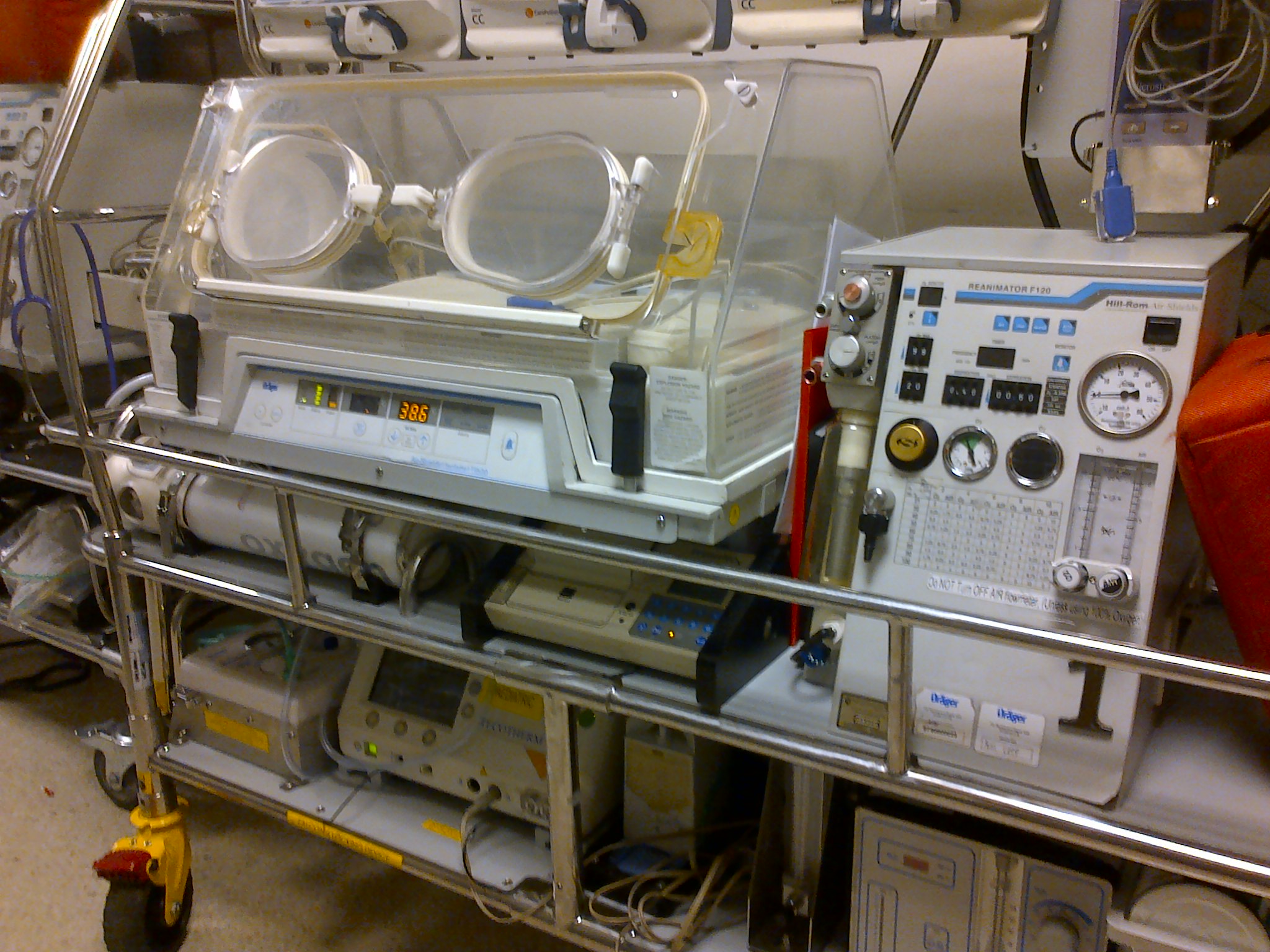Our Specialist Equipment

Our transport rig (trolley) and ambulances provide a mobile intensive care unit that aims to give your baby the best possible care whilst being transferred to their hospital. Problems during transfer are rare, but we carry as much equipment as possible to cover any emergencies that may develop during the journey.
Incubator
The incubator provides a safe environment that protects your baby from infection, keeps them warm at the right temperature, and keeps them safe on the road with special restraints that act like seat belts. Your baby will usually be ‘nested’ in a towel or blanket that helps them feel secure.
If you want to put a small teddy bear or a clean blanket into the incubator this would usually be encouraged. We will put a towel or sheet over the incubator in public areas to help keep baby warm and maintain your baby’s privacy so that you can have the pleasure of showing him or her off at the right time!
Syringe Pumps
These deliver the medicines that your baby needs. We use specialised pumps that monitor the speed and pressures of infusion to help make sure that the right drug doses are being delivered. The pump will make an alarm sound if a medicine has run out, or if there is a blockage or other problem preventing the medicine from being delivered.
Vital Signs Monitor
This screen monitors the key pieces of information that the doctor and nurse need to maintain your baby’s treatment and adjust drug doses and ventilation. The monitor measures blood pressure, heart rate, respiratory (breathing) rate, oxygen levels and temperature.
The monitor is set up to provide alarms that alert the doctor or nurse to any important changes. Most sounds you hear don’t meant that anything is going wrong, but are there to draw attention to the display so that the nurse or doctor can make any necessary adjustments.
Carbon Dioxide (CO2) Monitor
If your baby is ventilated, this device monitors the carbon dioxide being breathed out, which helps the doctor or nurse adjust the ventilator and alerts them to any problems with your baby’s breathing.
Ventilator
If your baby is having breathing difficulties, we will take over their breathing with this ventilator. They will have a breathing tube (endotracheal tube) put through their mouth or nose into the windpipe (trachea) which is connected to the ventilator. This is a specialised device designed for the small and fragile lungs of a newborn or premature baby.
Medicines
Usually, your baby will receive any medicines that are needed in the hospital before starting their journey, but if they need additional medicines during the journey we carry all of the essentials. There is a fridge on the ambulance for storing medicines that need to be kept cool.
CPAP Machine
Some babies who need help with breathing will receive CPAP (Continuous Positive Airway Pressure) rather than being attached to the ventilator. CPAP can be given through a special mask that fits over the nose and does not require a breathing tube.
Suction Machine
This machine is used to remove secretions (mucous) from the mouth or breathing tube in order to prevent blockage and help your baby feel more comfortable.
Cooling Machine
Babies that have had difficulties during the labour causing reduced oxygen levels (HIE -Hypoxic Ischaemic Encephalopathy) will be put onto a special mattress that cools their body temperature down in order to help them recover. This machine monitors the baby’s temperature and pumps cooled liquid around the mattress to keep baby’s temperature at the level set by the nurse or doctor.
Neopuff
The neopuff resuscitation device is used to provide air or oxygen if your baby is having difficulty breathing. It is similar to the “kiss of life” used in first aid, but the breaths are given by a machine that allows the nurse or doctor to control the timing and pressure of the breaths.
Nitric Oxide Analyser
Nitric Oxide is a life-saving gas that is given if your baby has high blood pressure in the lungs (PPHN or pulmonary hypertension). This device monitors the amount being delivered into your baby’s breathing tube and allows the doctor or nurse to adjust the flow of gas to the correct level.
Gas Cylinders
Our ambulances carry large gas cylinders, but the rig itself has extra cylinders to use on the short journey between the ambulance and the hospital ward, and also to act as a back-up supply.
